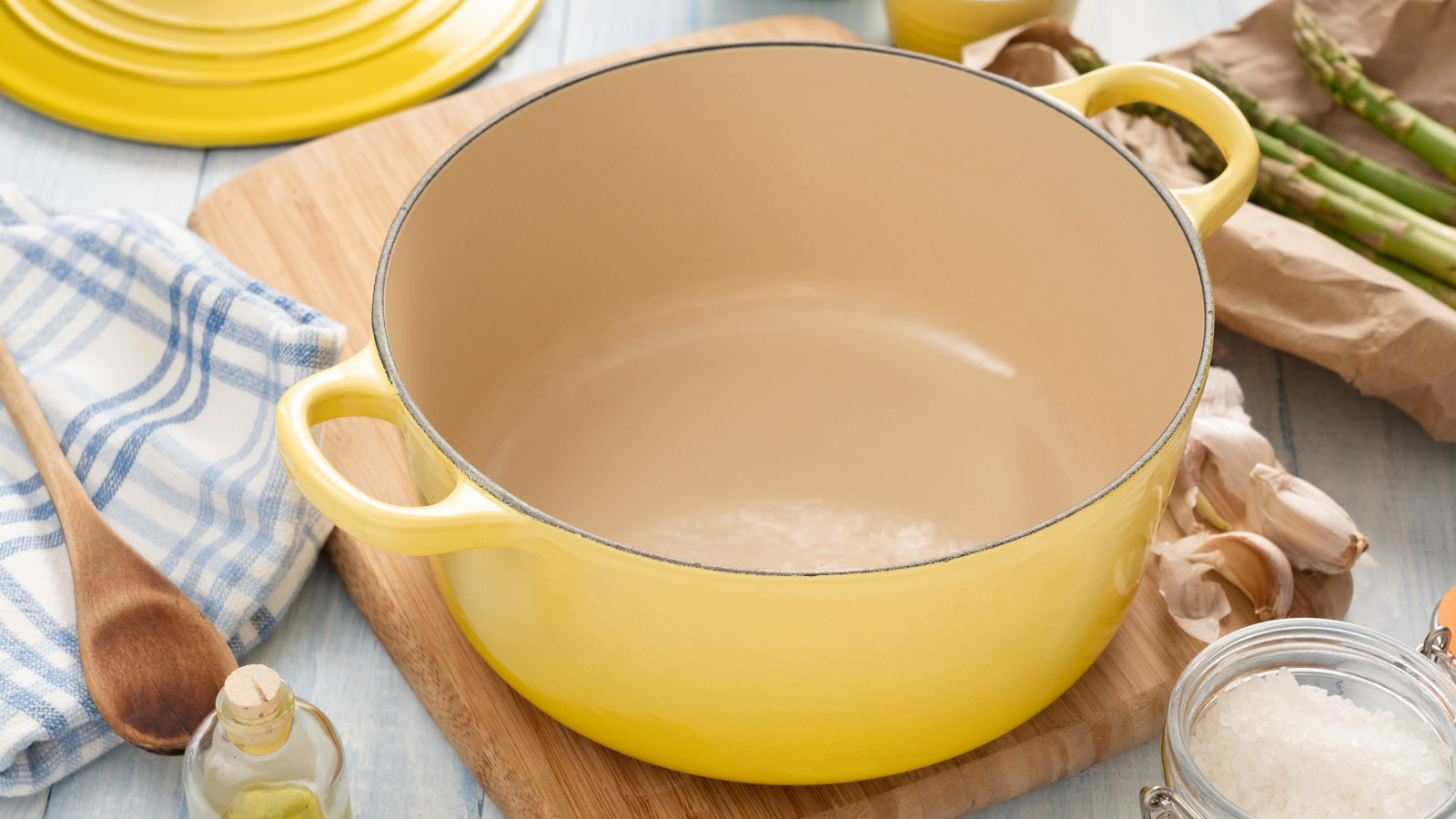
"The enamel on popular coated cast iron pans, like La Cresset Dutch ovens, is more than just a glossy, pretty finish. Like regular cast iron, enameled cast iron cookware has excellent heat retention properties compared to your typical stovetop pan. However, a popular mistake people make is thinking they can stand as high of temperatures as non-enameled equivalents. It's important to note, though, if you expose an enameled cast iron to too high of oven temps, you could very well ruin the coating - and the pan entirely."
"The enamel on cast iron pans is usually made of glass that's been applied as a coating on top of the metal. The enamel creates a smooth surface ideal for stewing, braising, and a myriad of cooking needs. It's a lot easier to clean than traditional cast iron (read: no seasoning your pan or scraping off residue). However, glass materials have lower heat resistance compared to metal."
Enameled cast iron enables searing and sautéing on the stovetop and finishing in the oven using a single vessel. The enamel coating is glass-based, producing a smooth, easy-to-clean surface suited for stewing and braising without seasoning. Glass enamel has lower heat resistance than bare metal, making enameled pieces vulnerable to high temperatures. Regular cast iron may tolerate temperatures near 650°F, while enameled cast iron typically tolerates roughly 400°F before risking cracking or warping. Avoid broiling and direct flames, and use enameled cookware for oven applications under about 400°F to protect the coating.
Read at Tasting Table
Unable to calculate read time
Collection
[
|
...
]